READY TO GET STARTED?
REQUEST A FREE ESTIMATE
Fill out the form below or call (888) 466-7849 for a free, no-obligation estimate.
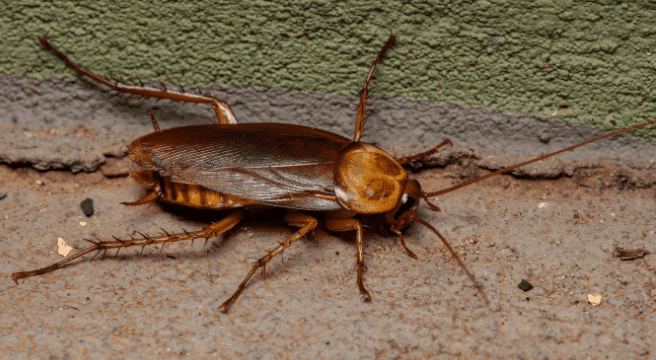
There’s one pest that every homeowner would rather not see inside their home – cockroaches. There are many distinct species of cockroaches, and each has their own unique characteristics. There are two popular types of cockroaches in the southeastern part of the US, but the American Cockroach is the largest and one of the most common out of the two. Here is a breakdown of the American cockroach and how to decide your plan of action to remove them from your home.
What is an American Cockroach?
The American cockroach is a major pest in the United States and is the largest of the home-infesting roaches. They are commonly known as the water bug, the Bombay canary, or the palmetto bug. This specific species is not native to United States, despite its name. They are typically reddish-brown with a yellowish figure eight pattern on the back of their head. They are oval shaped and range from 1 1/4″ to 2 1/8” in length.
Where are They Found?
American cockroaches are typically found outside, but it is not uncommon to find them indoors. During the summer months they can be found outside in areas like flowerbeds and underneath mulch piles. They will typically move indoors when they experience a notable change in the weather or food shortage. They prefer warm, moist, and dark environments such as basements or crawlspaces. These pests can enter structures through the sewer system, via human belongings, or by mass migration from other structures.
Are They a Threat?
The presence of American cockroaches in a home can pose a serious threat to your health. Cockroaches have been known to spread at least 33 kinds of bacteria, including E. Coli and Salmonella, along with different types of parasitic worms and other kinds of human pathogens. They have also been known to elicit year-round allergic reactions and asthma attacks due to their saliva, urine, and fecal droppings.
How Can I Prevent Them?
There are many ways to prevent roaches from entering your home. Here are some of our favorite ways to keep them out.
Finding these pests in your home can be quite alarming. Implementing cockroach prevention measures such as fixing leaks, sealing off entry points, and keeping kitchen and bathrooms clean will help keep these pests out. If this happens despite your best efforts at prevention, consider contacting a professional local pest control company that can help identify your pest, locate points of entry, and provide a prevention plan for your property to help keep roaches out.
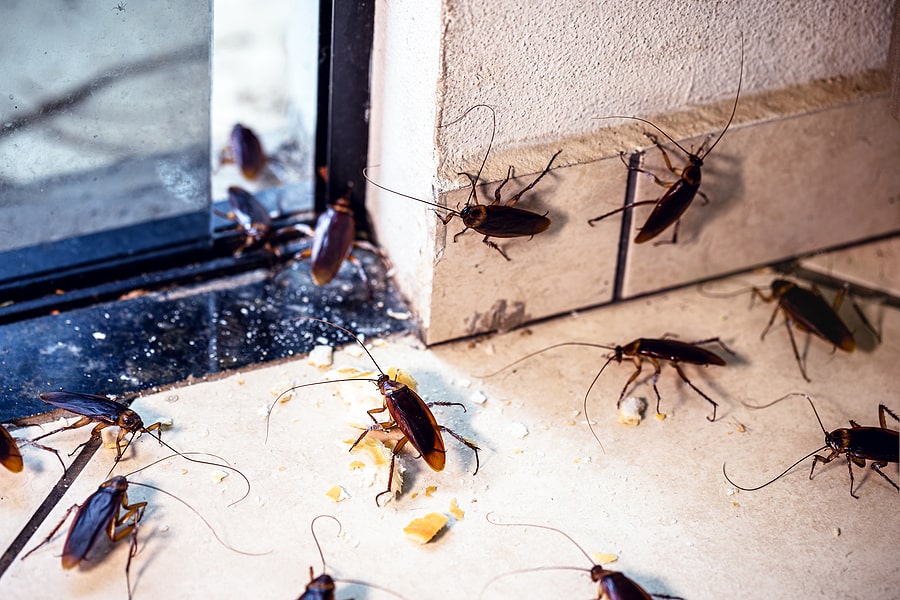
Roaches are resilient pests that have survived millions of years on Earth. Cockroaches are naturally tropical pests, preferring warm, humid habitats to thrive in. In fact, most species of roaches will die off at temperatures below 15 degrees Fahrenheit. Roaches have learned to adapt and are expert overwintering pests, making their way indoors to avoid exposure to cold temperatures and survive the winter.
There are four species of cockroaches in the United States that can survive year-round with the appropriate overwintering environment.
To answer the question above, roaches don’t necessarily die off in the winter. As long as they can find a warm place to shelter with a food source they can survive and reproduce year-round. The next question to ask yourself is, “How are they getting into my home?” Roaches can squeeze through openings as small as 3/16″ and will use any opening they find in your walls, siding, baseboards, and ceilings to get inside. Roaches are also notorious hitchhikers and will catch a ride indoors on bags, boxes, firewood, furniture, and appliances.
Keep roaches out this winter by:
If you have a problem with cockroaches or any other household pest, contact your local pest control company for an evaluation and treatment plan.
Mouse vs Rat: 5 Differences Explained
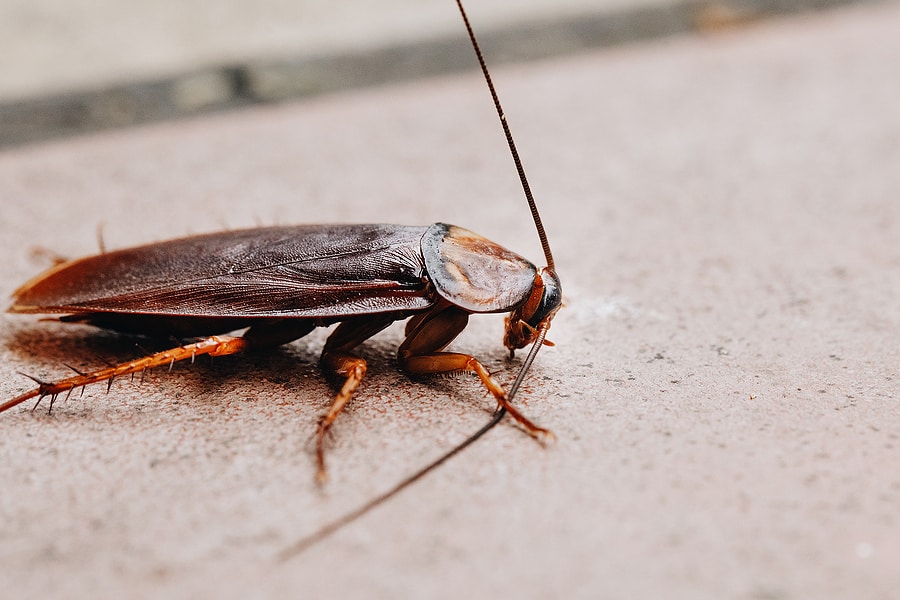
The cockroach might just seem like a creepy, annoying nuisance, but it can cause more damage than expected. Cockroaches transmit over 30 different kinds of bacteria – E. Coli, Salmonella, and more. In addition to this, they can also trigger asthma and allergy attacks as their droppings, saliva and shed skin contain allergens that increase asthma symptoms, especially in children.
As one of the most common household pests, it’s important to keep roaches under control to lessen the effects they cause. Here we breakdown the types of cockroaches you could be seeing in your home and how you can prevent them in the future.
While prevention can help keep cockroaches away, sometimes it’s best to get a professional involved. A local pest control company will be able to inspect your home and provide you with the best treatment and prevention plan going forward.
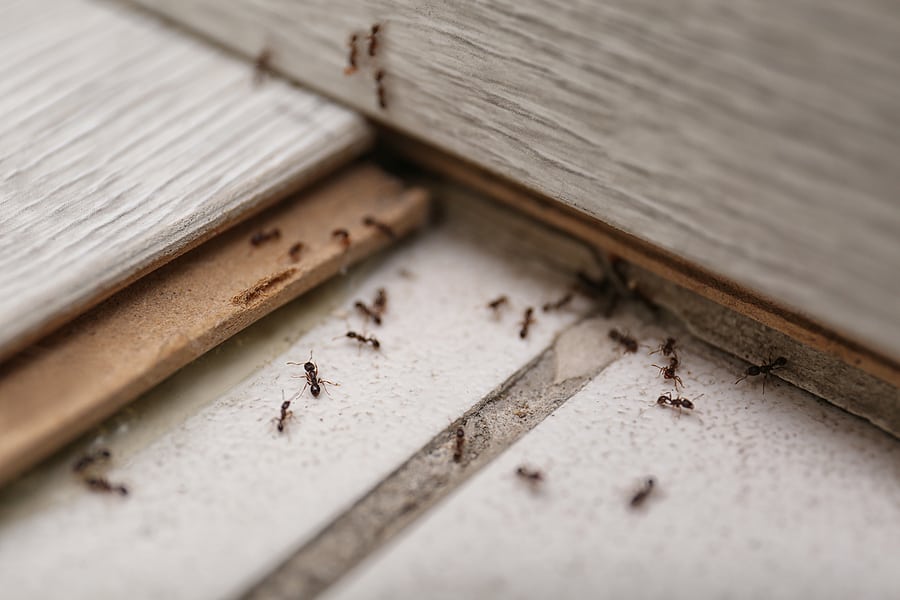
Many pests hibernate or “die off” during the winter, causing homeowners to feel like they can relax during the colder months. Overwintering pests, however, are here to rain on your parade. These pests seek refuge inside our homes looking for food, water, and a warm place to hide until the weather outside is more favorable. Here are 6 winter pests to watch out for along with tips to prevent them.

Ants will come in through the tiniest holes or cracks in the exterior of your home. They also like to sneak in on plants and flowers that are brought indoors. Ants are masters of overwintering, typically seeking out warm places deep in the soil or under rocks to hide out. Food can be scarce, though, and your home provides the perfect location for them to get everything they need to survive the winter – food, water, and warmth. The first step to ant control in your home is to get rid of their food source. Make sure food is well sealed and crumbs are cleaned up from floors and counters.
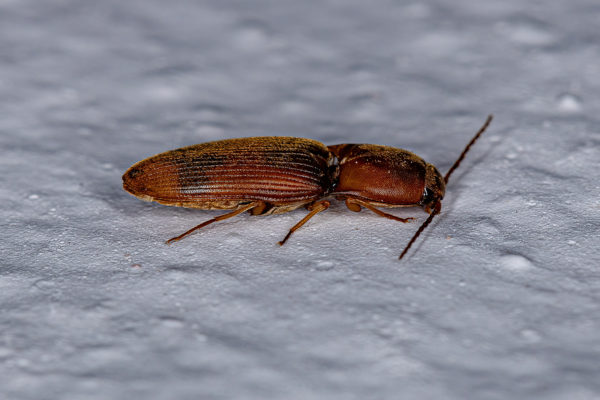
Beetles like to come indoors to get out of the cold. They are known to hide in the warmest areas of your home, such as near dryers or water heaters. Elm leaf beetles and click beetles are two of the most common overwintering beetles you may encounter. They are often brought inside on firewood. If you spot beetles inside, vacuum them up and immediately discard the bag or canister contents. Eliminate their food sources by keeping your kitchen and bathroom clean. Caulk windows or use weatherstripping around them. Keep wood piles and leaf litter away from your home. Inspect any wood before bringing it inside.
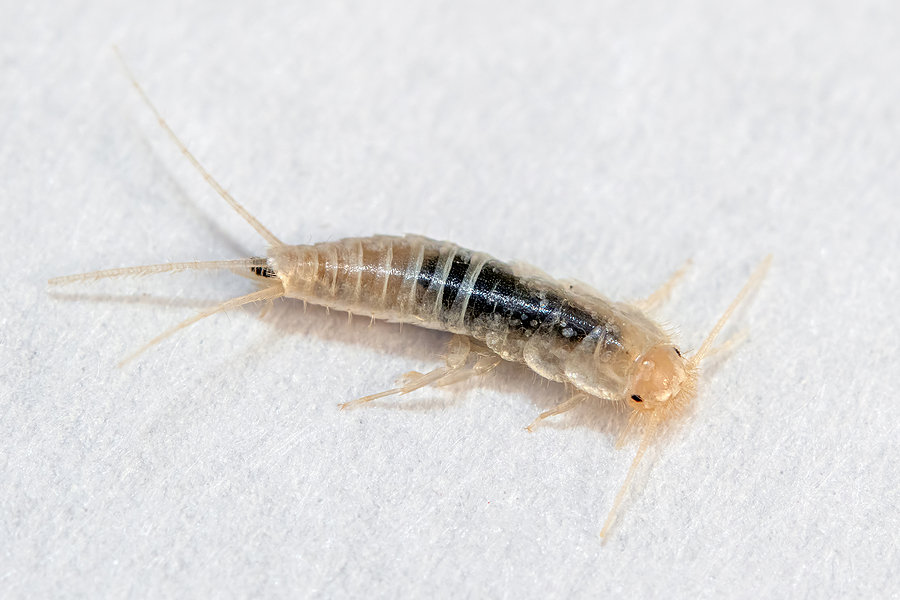
Silverfish prefer damp, cold places and will usually be found hanging out in your basement or bathroom. They are common in the winter months, often hitching a ride as you are hauling your holiday decorations in and out of your attic or garage. They feed on books, glue, wallpaper, and boxes. Keep silverfish under control by vacuuming often and decluttering your home. Get rid of any old newspapers, mail, and cardboard laying around. Inspect any boxes before bringing them inside. Store clothes in sealed bins, preferably made of plastic rather than cardboard.
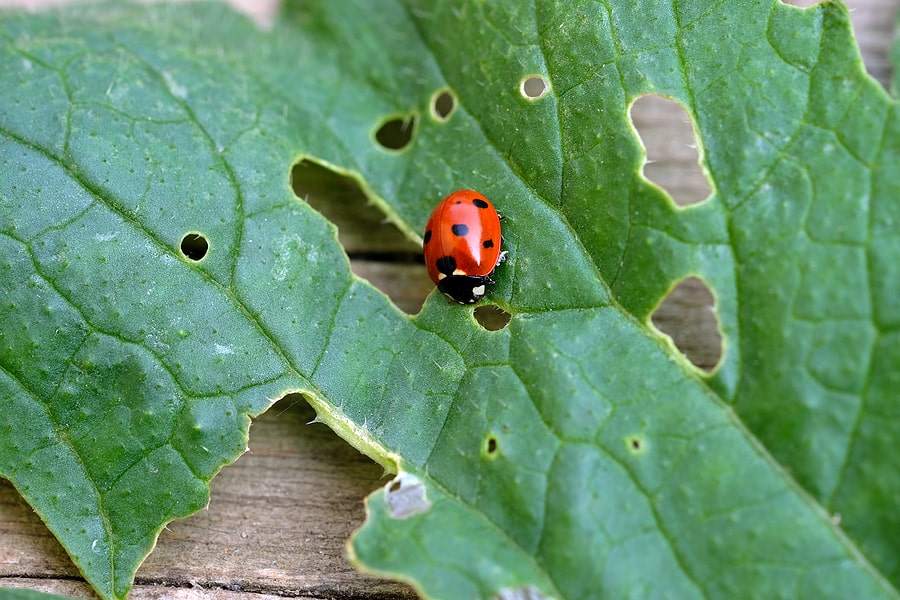
Ladybugs will come inside through window cracks and openings to shelter from the cold. While they don’t bite, they will secrete a yellow fluid with an unpleasant odor that not only attracts other ladybugs, but can also leave an unsightly stain on your walls, floors, ceilings, and more. Control ladybugs by locating and sealing any entry points you can find. Vacuum them up or spray them with soapy water. The soapy water will not only get rid of the ladybugs, but it will also get rid of the smell, helping prevent other ladybugs from coming back.
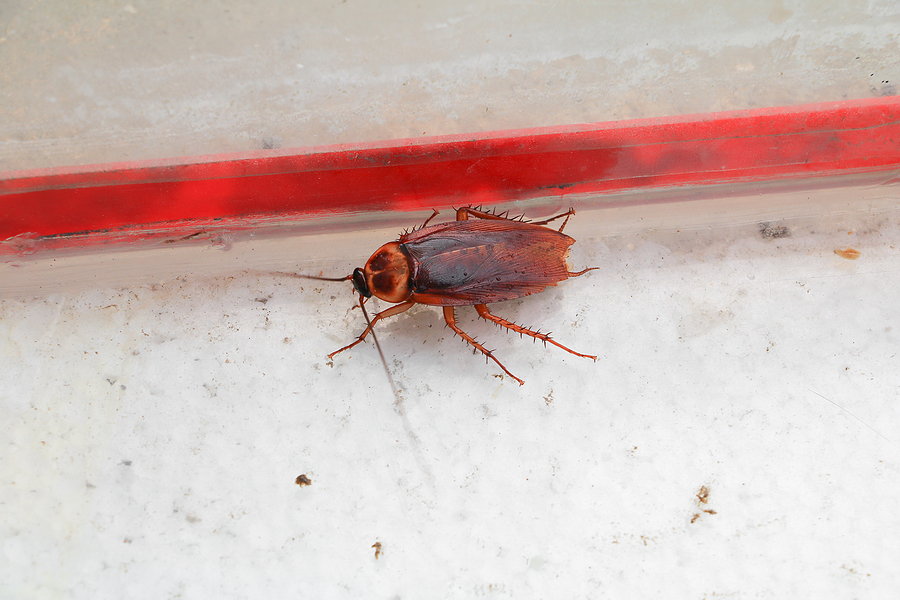
Roaches come indoors during winter for heat and humidity as they cannot survive the cold temperatures outdoors. They are also attracted to plants, leaf litter and mulch. Cockroaches pose a serious health risk to humans as they are known to transmit diseases and trigger allergies and asthma. They will also hitch a ride inside on grocery bags, boxes, and used appliances. They prefer to hang out in kitchens and bathrooms. Keep roaches at bay by cleaning counters and floors and vacuuming frequently. Dispose of your garbage regularly. Keep kitchens and bathrooms clean, especially under appliances and cabinets.
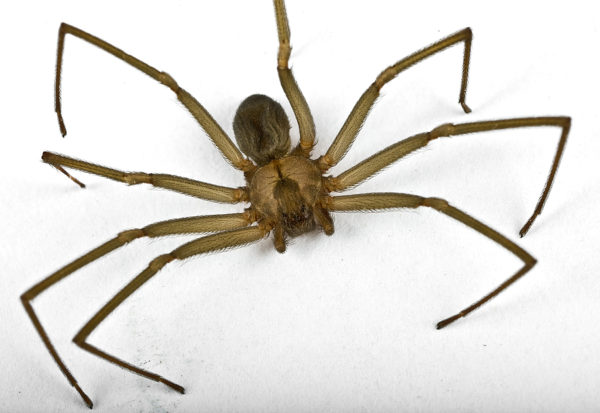
Spiders seek out warm, dark places to hide during the winter, usually in your basement, attic, or rarely used corners of rooms. They will also hide out in boxes and rarely used clothes and shoes. Keep spiders under control this winter by decluttering your home. Dust, vacuum, and sweep out cobwebs frequently. Discard any old boxes and packages they can use to hide out in. Keep trees and shrubs trimmed away from your home and cut back overhanging limbs from the roof. Store clothes and shoes in plastic containers.
No one wants to deal with pests inside their home regardless of what season it is. If you have a problem with pests at any time during the year, contact your local pest control company who can help identify the type of pest you have, identify entry points, and set up a treatment and prevention plan going forward.
Does My Crawlspace Need A Moisture Barrier?
What Every Homeowner Should Know About DIY Pest Control
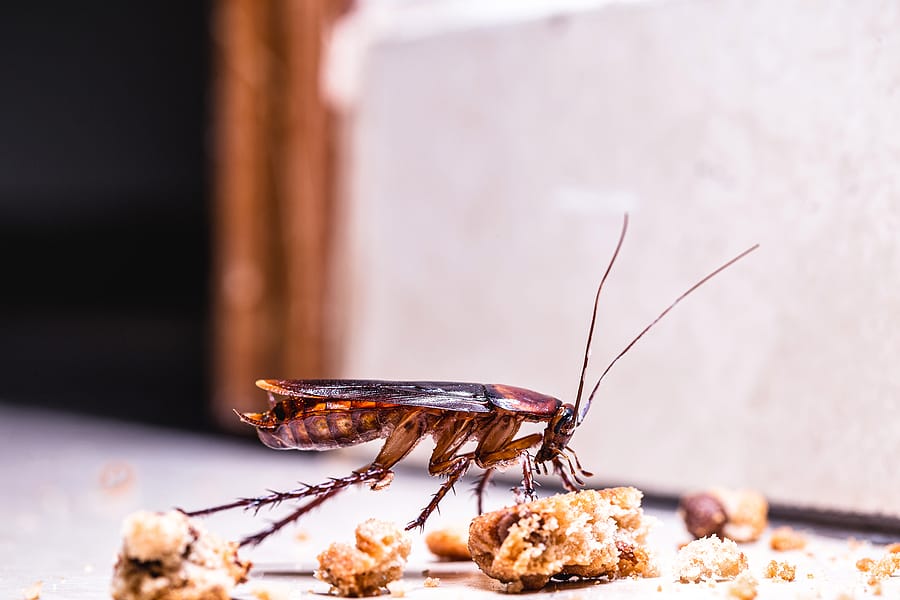
Your home provides warmth, shelter, and food – three things roaches are in search of this winter season. These pests will easily sneak in and infest your home if there are no preventative measures in place. Check out our top 3 ways to prevent cockroaches from entering your home.
Declutter Your Home
During the day, roaches tend to hide in dark secluded areas until nightfall arrives. By decluttering your home, you eliminate the chance of these pests from hiding out inside and finding items to use for shelter, such as cardboard or newspapers. Instead of using cardboard boxes for storage, switch them out for plastic storage containers. Always recycle and get rid of any old newspapers and unused cardboard boxes.
Seal Up Your Home
If you can see daylight coming through the outside of a door or window, chances are that cockroaches can get in. Roaches can fit into the smallest cracks or crevices leading inside the home. It’s important to inspect the exterior of your home frequently, always looking along the foundation, roof, attic, or crawlspace vents. If a smaller gap or hole is found, seal them using caulk. For larger holes, use steel wool or foam and for chimneys and attic vents use fine wire mesh.
Dry Out Your Home
Moisture will always attract roaches since they need water to survive. It’s important to check your home for leaking faucets, sinks, pipes, and even your refrigerators and appliances. If you notice a leak, make sure you get it fixed immediately.
While prevention can help keep these pests away, sometimes it’s best to call a professional. A pest control company will be able to thoroughly inspect your home, identify the type of cockroach you have, and provide you with the best treatment and prevention plan moving forward.